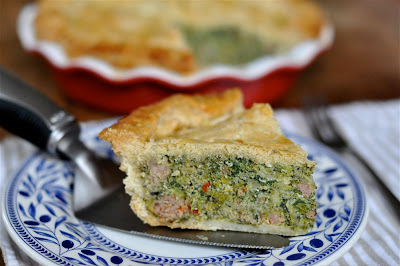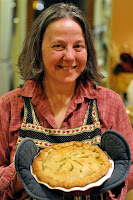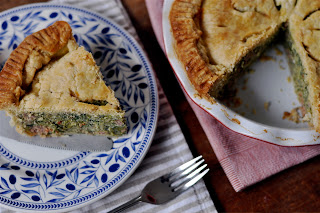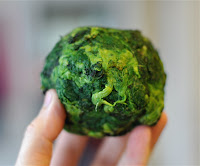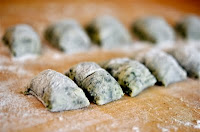I went back to the Oregon Truffle Festival again this year. It was a no-brainer: wild foods, fun people, and more Willamette Valley wine than a ship of Vikings could put away. What’s not to love?
Connie Green, longtime forager and owner of Wine Forest Wild Foods (French Laundry is a client), was one of the featured speakers, and there was the usual fast-paced agenda of lectures, forums, gastronomical heroics, plus a few hours in the field to get dirty, breath in some of that misty Willamette air, and work off all those calories (okay, maybe not all of them) during a guided truffle foray.
Just the way salt is a key ingredient in a good chocolate chip cookie, the success of the Oregon Truffle Festival rests on elements that might, at first glance, seem less than obvious, such as a hard-to-pin-down bonhomie that develops among the attendees. When you’re spending two or three days with strangers, you better establish some rapport. All weekend long I found myself exchanging email addresses and phone numbers with an eclectic, sociable bunch of people drawn together to the church of food and drink.
Maybe some of the good vibes came from the success so many enjoyed while digging their own truffles on Saturday. I’ve said it before and I’ll say it again: finding your own food is satisfying and infectious. I saw newbies emerge from the woods with huge grins and handfuls of Oregon white truffles. There were a few dogs on hand to help sniff out the tuberous delicacies, including Chloe, a lab whose master turned out to be John Getz, a professional forager who has been called “the mushroom whisperer.”

I first learned of Getz from a DVD that David Arora showed me a few years ago. Arora said it was like watching a magic trick. The video, filmed on the Oregon coast, follows Getz along on his rambling rounds as he appears to pull #1 matsutake buttons, one after another, from thin air. Nowhere is there even the slightest hint of cap emerging from the sandy humus or even a bump in the duff—and yet this soft-spoken guy uncovers buckets of perfect matsi that he might as well have pulled rabbit-like from a hat. Getz laughed when I told him about the video, and offered modestly that it was just a matter of knowing which trees hosted a fruiting. Yeah, that and having a ninja fungal sense and nearly four decades of scouring Pacific Northwest mushroom patches under your belt.
A few food highlights. Saturday’s post-foray luncheon, held at Silvan Ridge Winery in the bucolic Lorane Valley and helmed by Jason French from Ned Ludd in Portland and Shiloh Ficek of Red Hills Market in Dundee, kicked off with a Pinot Noir barrel tasting and continued with one of the best dishes of the weekend, a robustly truffled Chicken Liver Mousse (pictured at left) that was perfectly paired with a J. Scott Cellars Roussanne. Ficek told me he was a little nervous about the mousse because usually he made it in smaller batches, but the smooth texture and well-balanced accent of white truffle turned out just right.
French’s wood-fired Pork Coppa Sandwich (pictured at right) anchored the meal. It came dressed with quince jam and a black truffle slaw, along with a glass of Silvan Ridge Syrah. It was a beguiling mixture of earthy and domestic, salty and sweet, and succulent and crunchy. The wine pairing was another hit, and I ended up going home with bottles of both the J. Scott Roussanne and a Silvan Ridge Muscat that accompanied a dessert of Black Truffle Pear Crostata, a dish I plan to replicate for a future post.
We got back to the hotel at 4 p.m., with merely two hours of down-time before another feast of even greater proportions, the Grand Truffle Dinner. After taking photos of the first course, which stretched nearly the length of the room on two long prep tables, I went to get my seating assignment and was delighted to find myself next to Clare and Brian, the husband-and-wife team behind Big Table Farm and Wine in Gaston, Oregon. Let me tell you, this was like winning the lottery—like doubling your money in Vegas. Besides the very generous pours (and more pours) that accompanied each course during the meal, the Big Table duo had smuggled in several of their own bottles to share with their tablemates. A big happy table indeed.
Among my favorite dishes at the Grand Truffle Dinner was the first course, a charcuterie plate prepared by Elias Cairo of Olympic Provisions in Portland (pictured at left) that boasted perhaps the most intense truffle experience of the weekend: slices of white truffle-infused saucisson (i.e., dry-cured salami) along with Jamon York, Mortadella, truffled mustard, and some simple yet exquisitely pickled beets and onions. Another winner, dreamed up by Nick Balla from Bar Tartine in San Francisco, was an umami bomb of sablefish, sunchoke, and Kabocha squash, its white truffle broth so good that I saw guests tipping their plates back to drink in every last drop.
A scent of truffles hovered through the ballroom as the dinner went on late into the night and a jazz combo tried to play over the sounds of active silverware. There was much imbibing, and then, late-night, I found myself among a group of revelers laying siege to a 1988 Champagne Fleury while plotting foraging expeditions of the future. Good times.
The Oregon Truffle Festival is held the last weekend of January. I’ve already blocked out the dates for next year.

.jpg)





